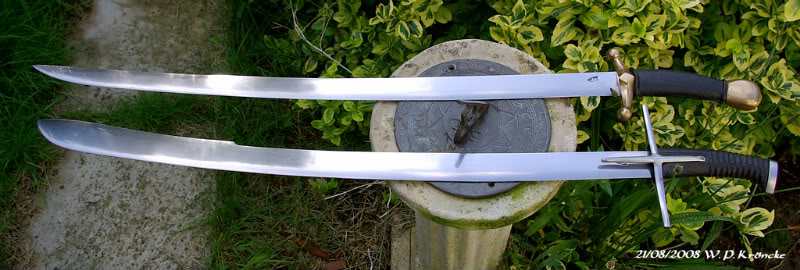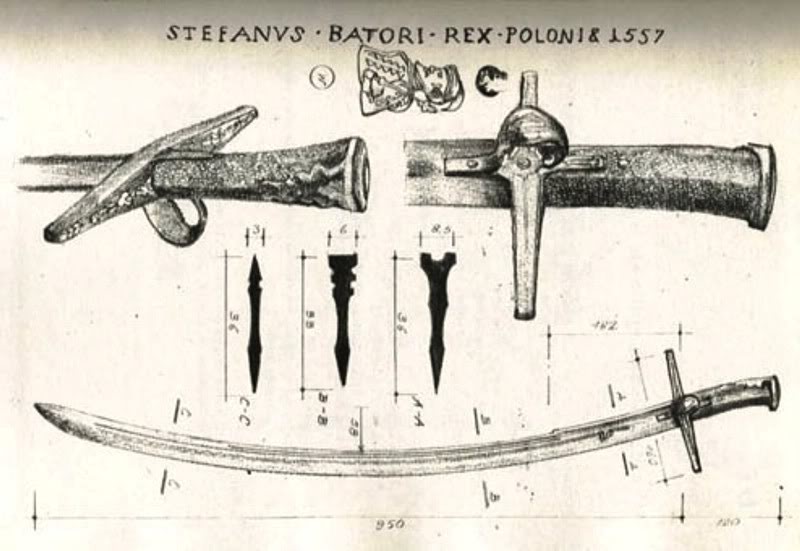A couple of hungarian sabres from the maker, V. Berbekucz in hungary.
9th C. Magyar sabre at top, 16 C. Magyar at the bottom.

the top 9C feels balanced the best, the 16C is a bit point heavy.







| Quote: |
| Matthew, these are great additions... |


| Jeff Demetrick wrote: |
| You are correct, a yelmen is the raised back edge of the saber.
Jeff |

| Quote: |
|
With (traditional) Japanese swords there is some adjustment of the curve. Either by heating a spot with red-hot copper block and quenching in water (to bend) or by hammering on on back ridge (with sword on its side, to straighten). (source The Craft of the Japanese Sword) |
| Sa'ar Nudel wrote: |
| Matthew, that last saber you posted above is very nice. Please compare its newly made blade to the blade of the original old Bedouin saber I have posted to see how similar they appear. Oddly as it may sound, Hungarian blades were sought after by arab sword fitters and were regarded highly; so were German blades. |
| Quote: |
| The Cold Steel Blucher is supposed to be an excellent bargain, very close to the original in measures and weight. I've handled it and it feels very good. |
| David Black Mastro wrote: | ||||
Why would that sound "odd"? A good quality blade is a good quality blade, no? Yep, Just take in consideration the distance between Hungary of the 19th c. to the Middle East, where quality blades from mainland Turkey or Iran were readily available. Hungary was not pretty famous as a blade exporter, comparing to Britain, Germany or France.
I must disagree here. I have an original Blucher, and the Cold Steel version doesn't balance anything like the original. The Cold Steel certainly cuts well, but it feels heavy and "clunky" when compared to all the original 1796s and 1812s I have handled. It may be so. I've handeled several types of Blucher style sabers but when I had a chance to swing the CS saber there was none around, so I had no original to compare at the spot. I do remember that the CS 1917 cutlass do feel awkward and blade heavy comparing the original, as it lacks the distal taper.. |
| Sa'ar Nudel wrote: | ||||
|
| Quote: | ||
I must disagree here. I have an original Blucher, and the Cold Steel version doesn't balance anything like the original. The Cold Steel certainly cuts well, but it feels heavy and "clunky" when compared to all the original 1796s and 1812s I have handled. It may be so. I've handeled several types of Blucher style sabers but when I had a chance to swing the CS saber there was none around, so I had no original to compare at the spot. I do remember that the CS 1917 cutlass do feel awkward and blade heavy comparing the original, as it lacks the distal taper.. |